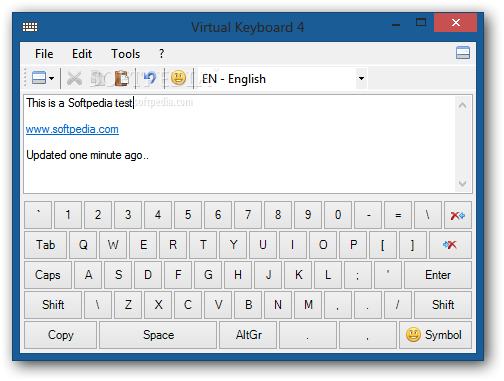

Logic Pro X: Add in the "MIDI FX" section of your mixer track that contains your synthesizer.Add as an AUi (Audio Unit Instrument) in one track and add your synthesizer of choice as an AUi in another track. Logic Pro 9: Logic Pro 9 unfortunately doesn't support "MIDI FX" (you would have to upgrade to Logic Pro X).Now create another instrument track, select your synthesizer of choice as Instrument, select as MIDI Input "01 VirtualKeyboard - MIDI Out" and click on the little speaker below the track's name to monitor it. Cubase (option B): Create instrument track, select "VirtualKeyboard" as Instrument on one track and select "All MIDI inputs" as MIDI input.Then go to the "MIDI Sends" tab, click on the second line of the first slot and select "VirtualKeyboard Midi In". Create a MIDI track, select "All MIDI inputs" in the input and select your Synthesizer of choice in the output. Add VirtualKeyboard and your Synthesizer of choice as "Rack Instruments" (right-click on the background to have this option). Cubase (option A): Click on "Devices" > "VST Instruments" on the top application menu (or F11).VirtualKeyboard Synth or VirtualKeyboard Standalone have a SFZ (AKA Sound Font) Sampler built-in where you can select a piano or other sounds. VirtualKeyboard doesn't produce sound (it is only a MIDI plugin). This download includes 2 VST/AU plugins: VirtualKeyboard and VirtualKeyboard Synth, and a 'normal' standalone program: VirtualKeyboard Standalone. Finally you can use the VirtualKeyboard Standalone version to open, play, pause and resume MIDI files at different speeds without loading a full featured DAW.Save your settings automatically with your DAW project.Important: please click inside the plugin if the keyboard focus is lost while switching between plugins. Use "Shift" to control the sustain pedal in both settings."zxcvbnm" for notes CDEFGAB, "qwertyuiop" for notes CDEFGABCDE (+1 oct).The key mappings for a QWERTY keyboard are: Click on 'Settings' to configure your computer keyboard. Play notes too with your computer keyboard.You will probably find the following keyboard shortcuts useful: Play, pause and resume MIDI files at different speeds.Use it to trigger notes with different velocities (clicking at a different height of each key if "Velocity" is 0 or send constant velocities if "Velocity" is greater than 0).Hide all settings to show only the keyboard by clicking anywhere on the keyboard while holding the "Cmd" (Mac) or "Ctrl" (windows) key.Label the keys with their note name, octave or MIDI number.

Resize it: drag the bottom-right corner of the keyboard to change its height and width, drag the pedal boundaries to change their dimensions and edit the key width in the menu.Hold "Alt-Cmd" (Mac) or "Alt-Ctrl" (Win) and drag the keyboard to stretch it (changing the key width).Hold "Alt" to drag the keyboard horizontally with your mouse.Change the color of the highlighted notes that are on or sustained.You can also hide them by dragging their right border to the left. Display the Pitch and Mod Wheel changes or use them to send your own values.Please click inside the plugin if the keyboard focus is lost while switching between plugins. You can also use the "Shift" key to control the sustain pedal if you don't have a physical pedal. Visualize the Soft, Sostenuto and Sustain pedals and play them with your mouse (or hide them by dragging the top of the pedals to the bottom).Tip: set the sliders to the maximum for infinite fade outs. Notes sustained with the sustain pedal can be set with a longer, independent fade out. Use the "Fade" sliders to set their visual queue in milliseconds for each channel. Make the notes fade away instead of ending abruptly to help you visualize quick runs.To solo it: Alt-click on the MIDI channel legend or click on the "Solo button". To mute a channel: "Cmd"-click (Mac) or "Ctrl-click" (Win) on the MIDI channel legend or click on the "Mute" button. "Mute" or "Solo" MIDI channels and display their notes in different colors.Stop the cursor in your DAW and still see what notes were being played (note that most virtual keyboards will clear all notes when you press stop).You'll find this virtual keyboard more flexible than other ones because it allows you to:


 0 kommentar(er)
0 kommentar(er)
